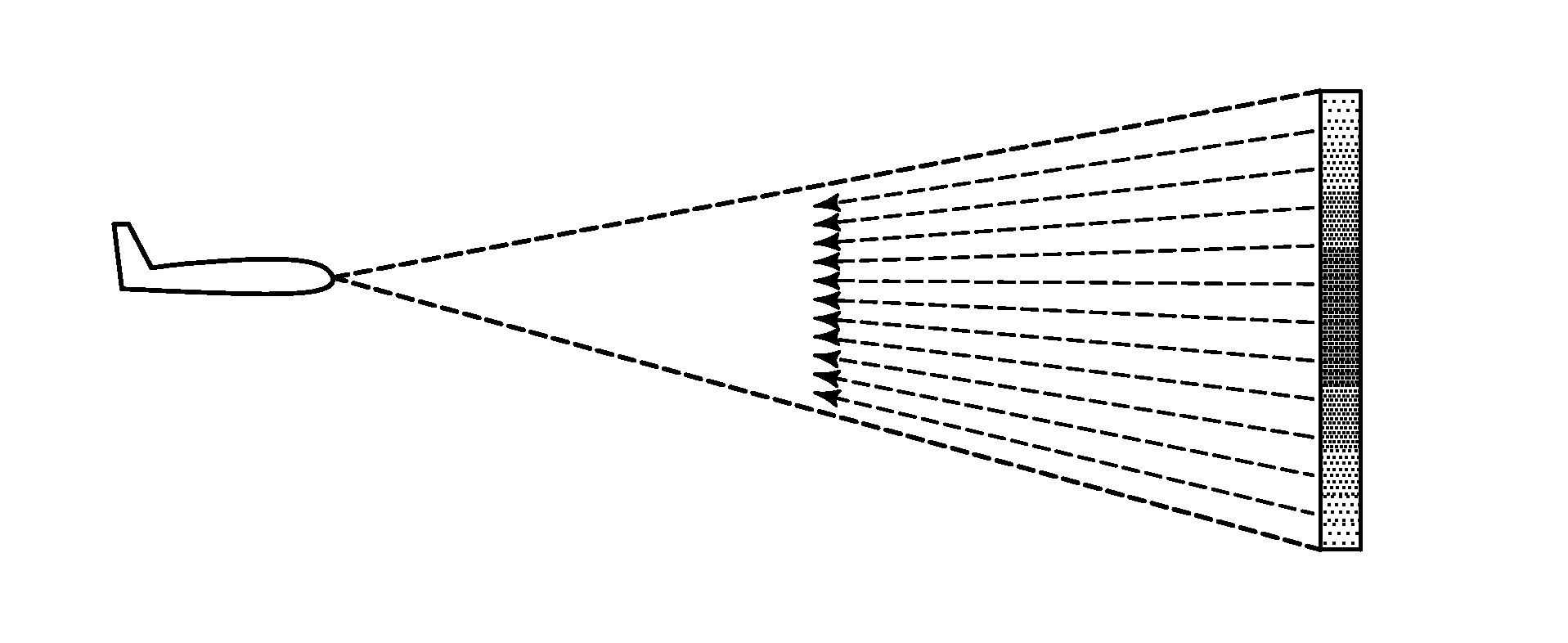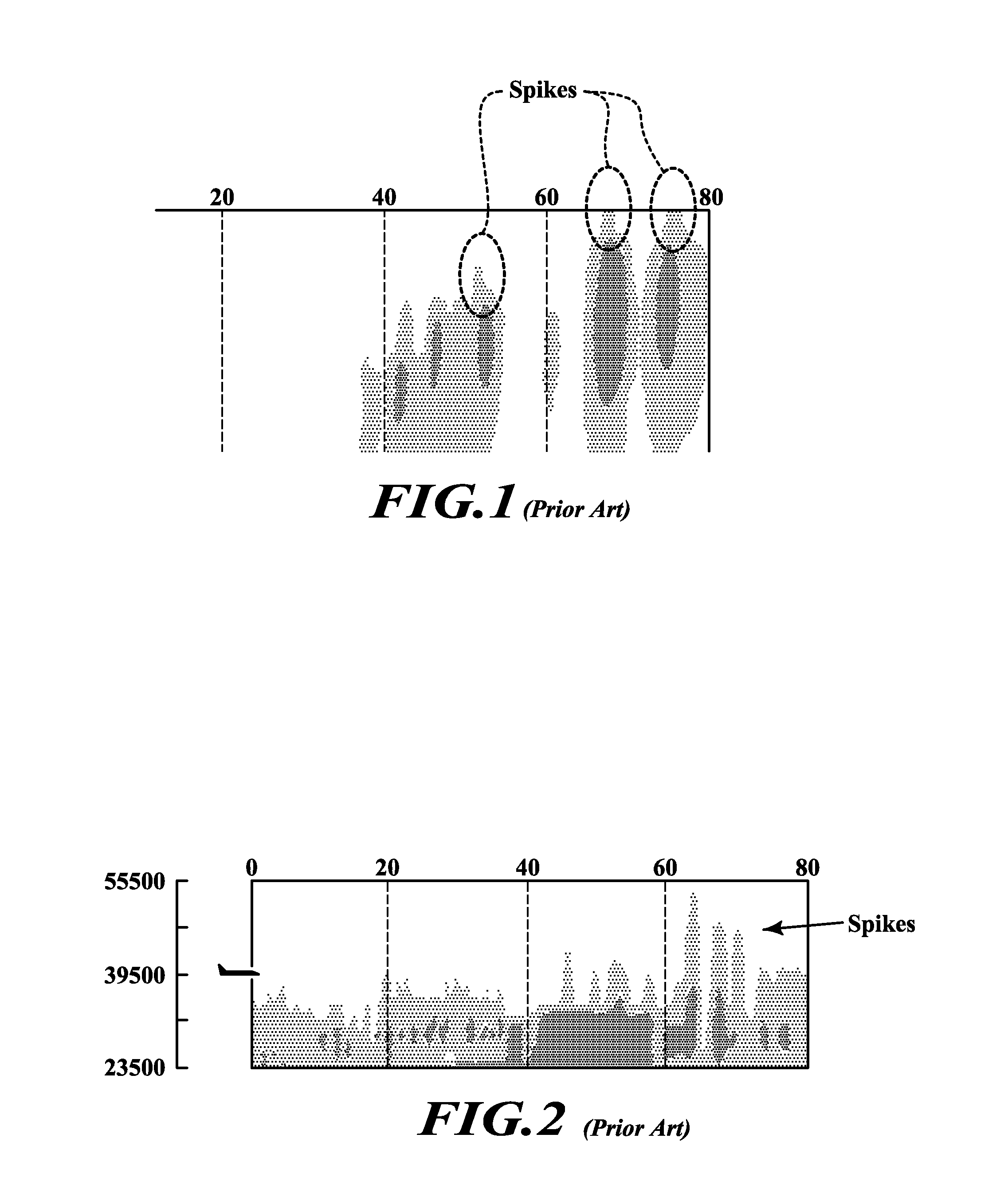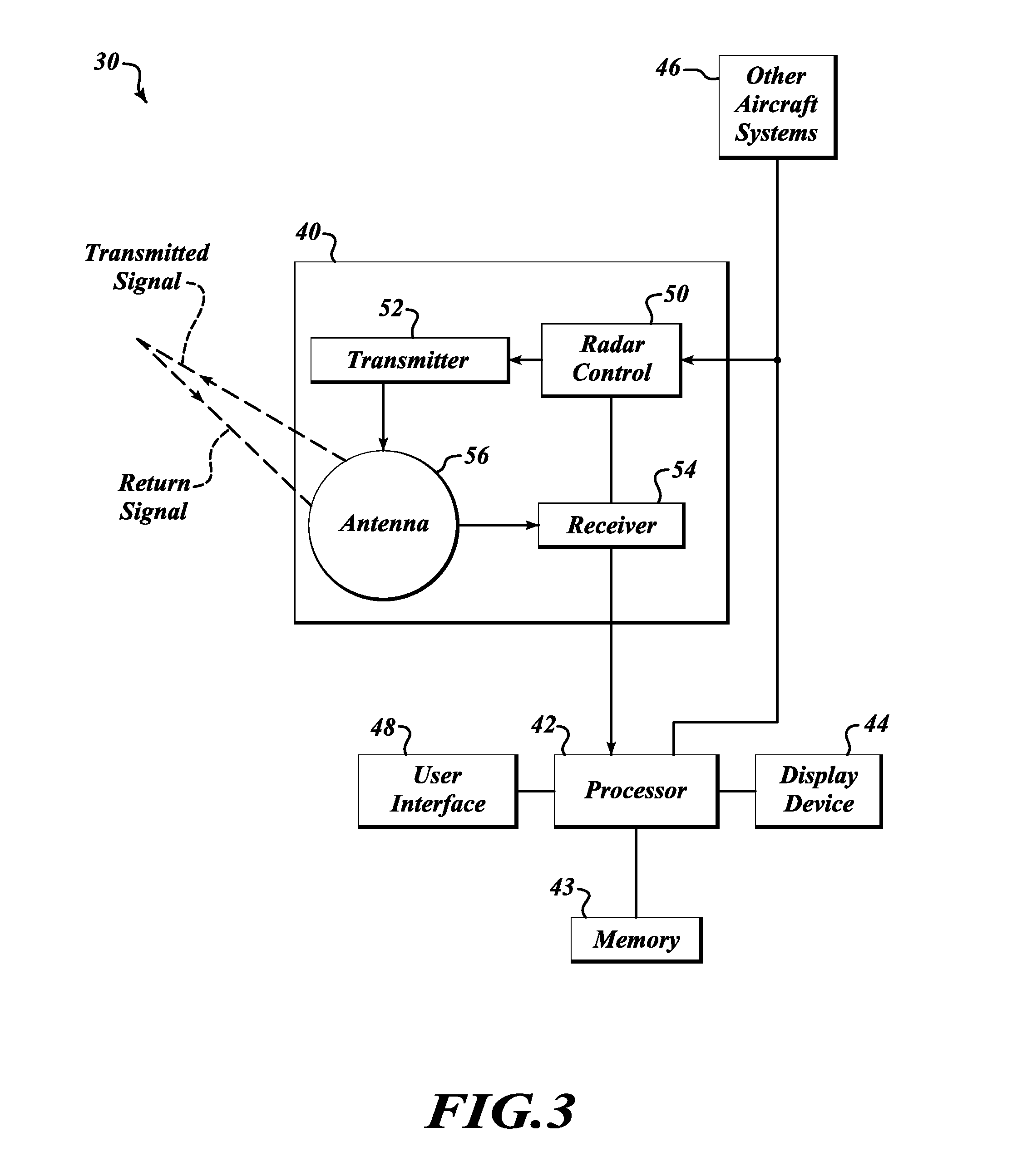Weather radar beam-sharpening and de-quantization
- Summary
- Abstract
- Description
- Claims
- Application Information
AI Technical Summary
Benefits of technology
Problems solved by technology
Method used
Image
Examples
Embodiment Construction
[0020]The present invention is a system, method, and computer program product for improving detail of a weather radar display at range. FIG. 1 illustrates an exemplary system 30 formed in accordance with the present invention. The system 30 includes a weather radar system 40, a processor 42, memory 43, a display device 44, other aircraft systems 46, and a user interface 48. The processor 42 is electrically coupled to the weather radar system 40, the display device 44, the other systems 46, the user interface 48, and the memory 43. An exemplary weather radar system 40 includes a radar controller 50, a transmitter 52, a receiver 54, and an antenna 56. The radar controller 50 controls the transmitter 52 and the receiver 54 for performing the sending and receiving of signals through the antenna 56 based on aircraft data (i.e., position, heading, roll, yaw, pitch, etc.) received from one or more of the other aircraft systems 46.
[0021]The weather radar system 40 receives signals that aris...
PUM
 Login to View More
Login to View More Abstract
Description
Claims
Application Information
 Login to View More
Login to View More - R&D
- Intellectual Property
- Life Sciences
- Materials
- Tech Scout
- Unparalleled Data Quality
- Higher Quality Content
- 60% Fewer Hallucinations
Browse by: Latest US Patents, China's latest patents, Technical Efficacy Thesaurus, Application Domain, Technology Topic, Popular Technical Reports.
© 2025 PatSnap. All rights reserved.Legal|Privacy policy|Modern Slavery Act Transparency Statement|Sitemap|About US| Contact US: help@patsnap.com



